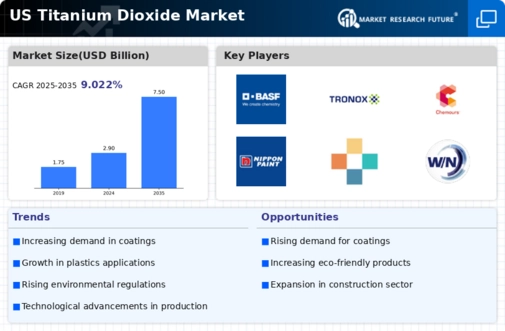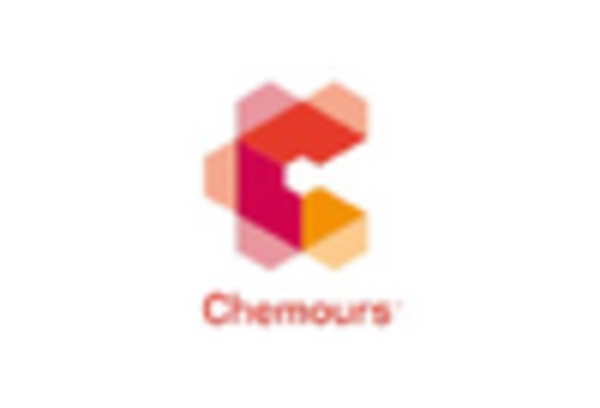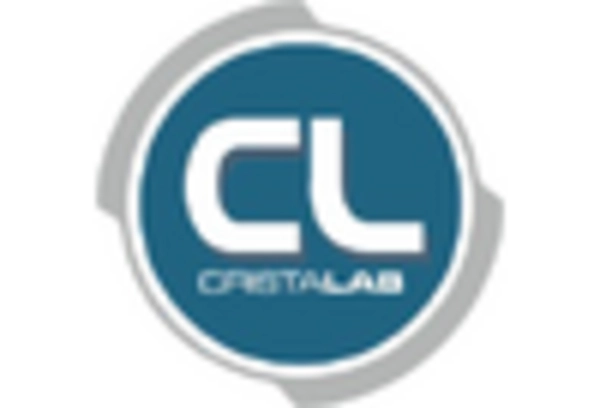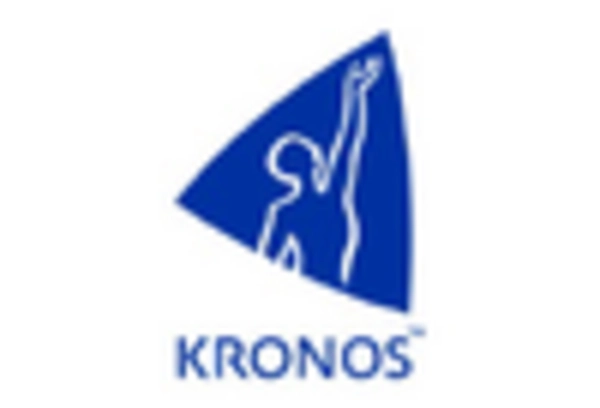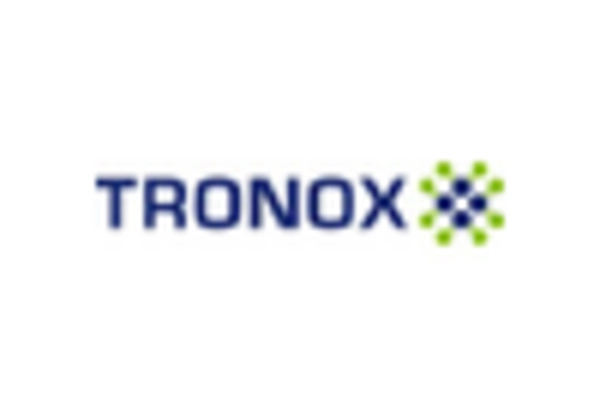The titanium dioxide market exhibits a dynamic competitive landscape characterized by a blend of innovation, strategic partnerships, and regional expansion. Key players such as Chemours (US), Tronox (US), and Huntsman (US) are actively shaping the market through their distinct operational focuses. Chemours (US) emphasizes sustainability and innovation, particularly in developing eco-friendly TiO2 products, which aligns with the growing demand for environmentally responsible materials. Tronox (US) has been enhancing its production capabilities, focusing on vertical integration to optimize its supply chain and reduce costs. Huntsman (US), on the other hand, is leveraging strategic partnerships to expand its product offerings and market reach, particularly in the coatings and plastics sectors. Collectively, these strategies contribute to a competitive environment that is increasingly focused on sustainability and operational efficiency.
The business tactics employed by these companies reflect a concerted effort to localize manufacturing and optimize supply chains. The market structure appears moderately fragmented, with several players vying for market share while also collaborating on sustainability initiatives. This competitive structure allows for a diverse range of products and innovations, fostering a healthy environment for growth and development.
In October 2025, Chemours (US) announced a significant investment in a new production facility aimed at increasing its capacity for sustainable titanium dioxide production. This move is strategically important as it not only enhances Chemours' market position but also aligns with the increasing regulatory pressures for environmentally friendly manufacturing processes. The investment is expected to bolster the company's ability to meet the rising demand for sustainable products in various applications, including paints and coatings.
In September 2025, Tronox (US) completed the acquisition of a smaller competitor, which is anticipated to enhance its market share and operational efficiencies. This acquisition is likely to provide Tronox with access to new technologies and customer bases, thereby strengthening its competitive edge. The integration of these operations is expected to yield synergies that could improve profitability and expand its product portfolio.
In August 2025, Huntsman (US) entered into a strategic partnership with a leading technology firm to develop advanced digital solutions for its manufacturing processes. This collaboration aims to enhance operational efficiency through AI integration and data analytics, which could lead to significant cost savings and improved product quality. The focus on digital transformation reflects a broader trend within the industry towards leveraging technology to gain a competitive advantage.
As of November 2025, the titanium dioxide market is increasingly influenced by trends such as digitalization, sustainability, and the integration of advanced technologies. Strategic alliances are becoming more prevalent, as companies recognize the need to collaborate to address complex challenges and enhance their competitive positioning. Looking ahead, it appears that competitive differentiation will evolve from traditional price-based competition to a focus on innovation, technological advancements, and supply chain reliability. This shift may redefine the competitive landscape, compelling companies to invest in R&D and sustainable practices to maintain their market positions.


